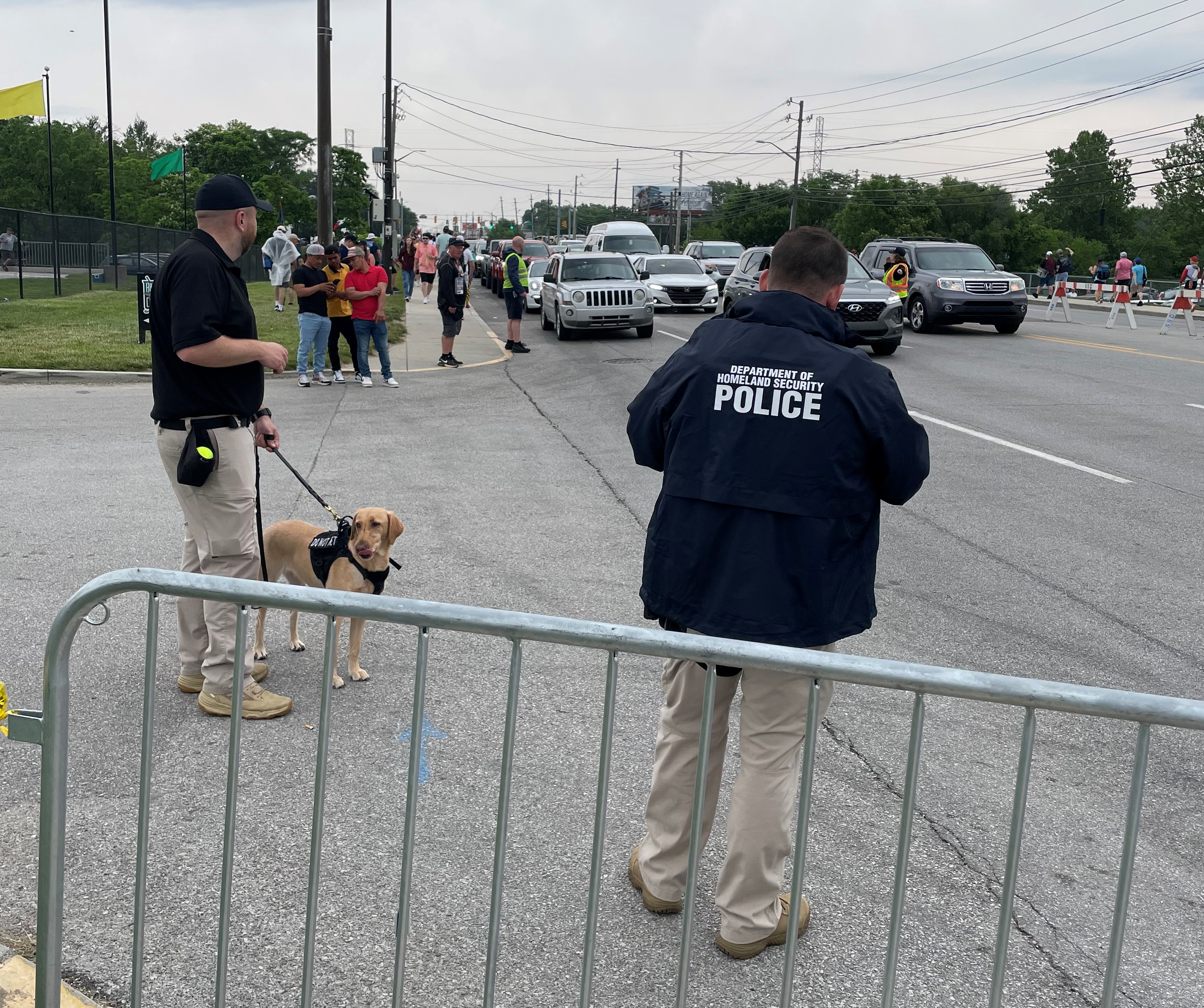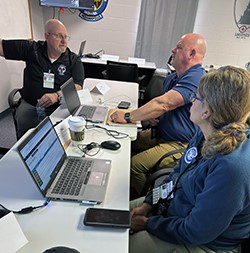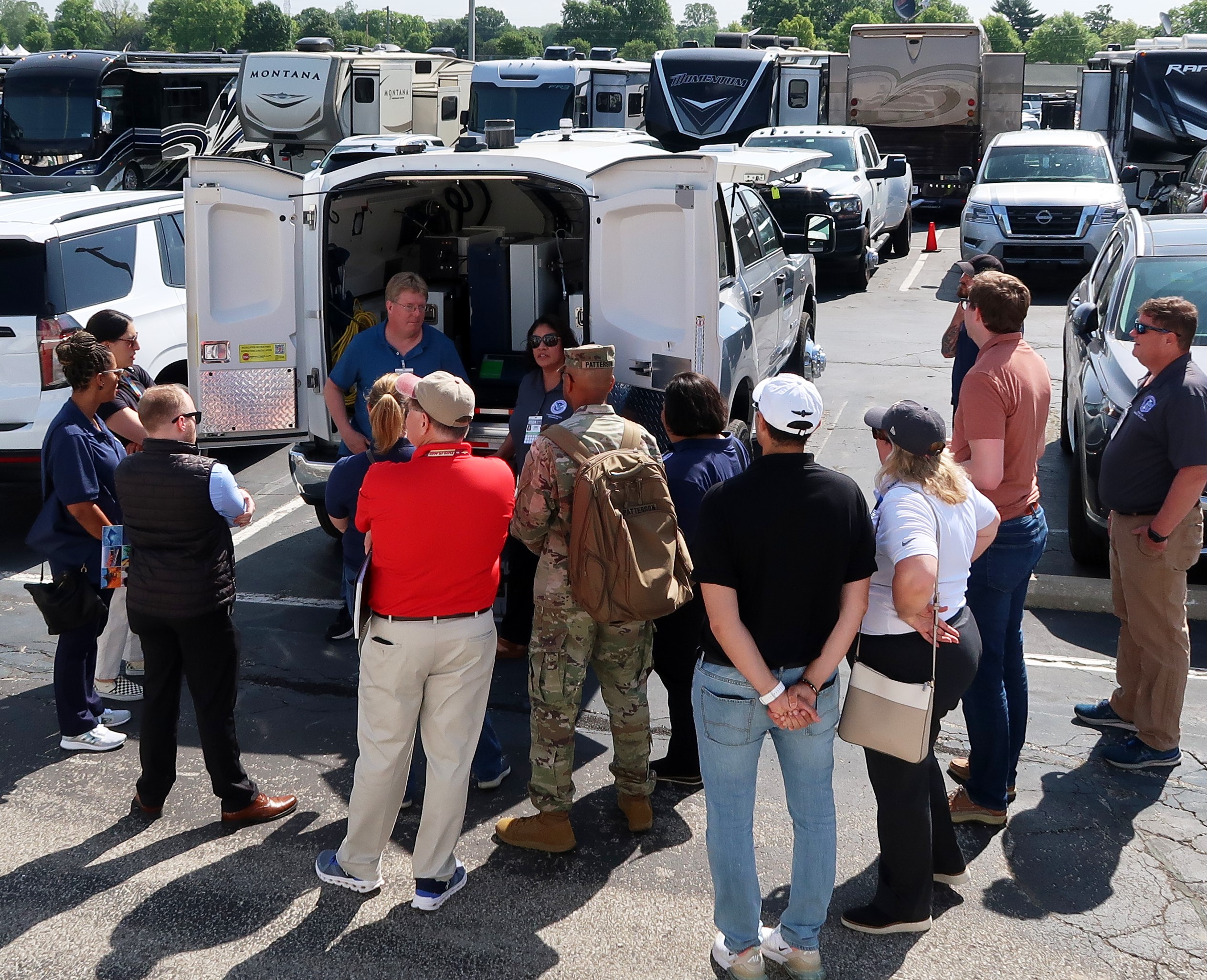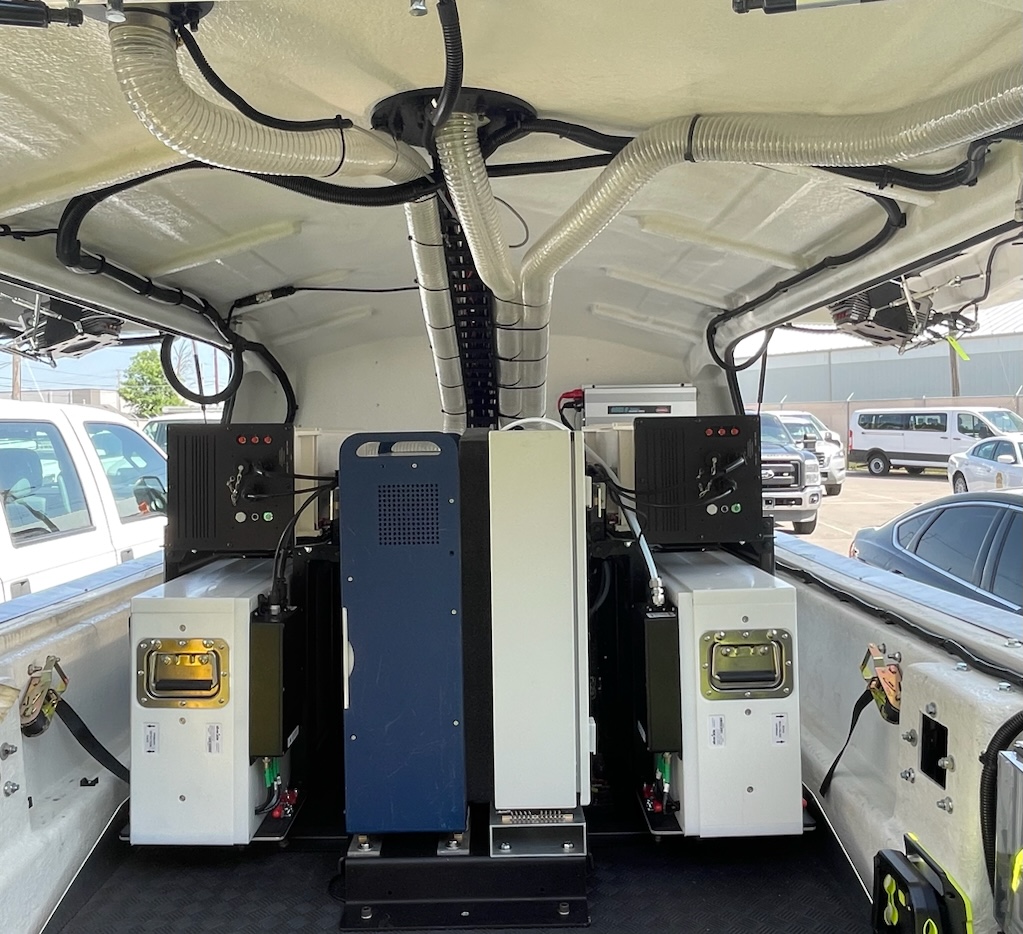 TSA Assistant Federal Security Director-Law Enforcement Carina Bertella briefs C-UAS ground interdiction teams. (Photo courtesy of Bengy Tanner)
TSA Assistant Federal Security Director-Law Enforcement Carina Bertella briefs C-UAS ground interdiction teams. (Photo courtesy of Bengy Tanner)
Hundreds of thousands of race car fans filled the Indianapolis Motor Speedway this past Sunday to watch the 108th running of the Indy 500, and TSA made its presence known.
Indiana TSA Federal Security Director Aaron Batt, who Department of Homeland Security (DHS) Secretary Alejandro Mayorkas appointed as the event’s federal coordinator, said 53 TSA employees supported the “Greatest Spectacle in Racing,” the largest number among the 30 federal government agencies supporting the event.
“TSA expanded its role this year,” said Batt. “For the 60,000 nationwide events considered by DHS for identification of a Special Event Assessment Rating, this ranks No. 7 in highest potential risk for unmanned aircraft systems. Because this is an open-air event with 350,000 people, it also presents an attraction/risk for a chemical, biological, radiological and nuclear attack.”

However, heading into the big race Memorial Day weekend, the federal government had no reported credible threats to the Indianapolis 500 or related events, but TSA and other federal, state and local agencies were ready just in case.
“In addition to the 350,000 people entering the track, nearly 4,000 vehicles entered the speedway, creating an opportunity to conceal deadly or dangerous items,” Batt explained. “These challenges, along with the need to get everyone into the facility within two to three hours, makes it necessary that we continue to innovate, explore new technology and apply multiple layers that overlap and complement each other.”
TSA deployed 15 canine teams, two regional canine training instructors and two support staff on Race Day to help screen the vehicles. The agency also assigned 15 airport screening officers to work with the canine teams, providing instructions to drivers to expedite screening at the track.
Before opening the speedway to the public, TSA also swept the racetrack with canines.
It was an incredible security operation.
“The many agencies need to work together, serving in a support role to local and state agencies such as the Indianapolis Metropolitan Police Department and Indiana State Police,” noted Batt. “Approximately 1,200 law enforcement and security officers protected the venue with shared responsibilities.”
He said the most notable expansion of TSA’s efforts this year was the introduction of a CBRNE vehicle to detect chemical, biological, radiological, nuclear and explosive threats or incidents.

“Nearly every vehicle that enters the track is assessed for explosives and CBRNE,” Batt said. “We also deploy CBRNE devices inside the track to analyze people, property and other devices during the race. For the past couple of years, we have used CBRNE vehicles at the Indy 500, but this is the first time TSA has provided its own vehicle in support of the Indianapolis Metropolitan Police Department and DHS Countering Weapons of Mass Destruction (CWMD) office.”
This year, TSA operated one of the four mobile CBRNE detection units put into service at the Indianapolis Motor Speedway.
Surface transportation security around Indianapolis
TSA’s Surface Operations was out in full force to support Batt’s Federal Coordination team and protect the city’s surface transportation system, most notably Indy’s bus and pipeline systems.
“From a TSA Surface Operations security perspective, we have two incredible stakeholders in Indianapolis with IndyGo (bus rapid transit) and the Citizens Energy Group (pipeline),” said TSA Regional Security Director Anthony Metcalf. “Our Surface Operations personnel embedded themselves inside the IndyGo downtown hub in the event of criminal-related activities on the bus system around Indianapolis.”
Metcalf said his teams also kept a close eye on possible wrongdoing that could have impacted Citizens Energy’s various pipeline transportation systems in and around the racetrack area.
“Anytime you have such a large gathering of spectators, TSA Surface Operations operates from a ‘leaning forward’ approach and prepares for any potential threats that may arise,” Metcalf described.
TSA’s Visible Intermodal Prevention and Response (VIPR) teams played a key role in protecting Indy’s surface transportation.

“VIPR teams supported transportation venues, such as IndyGo, around the speedway, providing an increased visible law enforcement presence,” said Bengy Tanner, Assistant Supervisory Air Marshal in Charge from the Federal Air Marshal Service Chicago Field Office. “Teams were equipped with preventative radiological nuclear detection equipment, working alongside the CWMD team throughout the race day.”
The Law Enforcement/Federal Air Marshal Service (LE/FAMS) deployed 11 FAMs from the Chicago Field Office to support security in the city bus system, Indianapolis International Airport, the speedway and the Indy 500 Parade.
Eyes on drones
A relatively new TSA operation at events, like the Indianapolis 500, is the agency’s eyes on drones.
“LE/FAMS had its mobile, detect, track and identify technology deployed to Indianapolis International Airport to gather and collect data on unmanned aircraft systems (UAS) while providing local and state law enforcement the information to respond to and mitigate any UAS threats,” said Robert Duerr, Supervisory Air Marshal in Charge from the Federal Air Marshal Service Chicago Field Office.
Duerr said the FBI was the lead agency, providing specific technology on site to monitor and mitigate UAS activity at the speedway, while LE/FAMS partnered with the FBI, local and state law enforcement to support the mission.
“UAS threats come in many forms,” he said. “Nefarious – use of explosives, chemical, biological or nuclear. Accidental – drone lands on the racetrack during the event.”
Duerr said LE/FAMS offers threat and vulnerability education, launch site assessments and recommends ways to drive down UAS threats and improve response.
“We analyze data from our technology to ensure people operating drones in the national air space are doing so safely and complying with Federal Aviation Administration (FAA) regulations,” Duerr assessed. “FAMs may respond to small UAS encounters that pose a threat to the safety and security of airport operations, providing outreach and education to operators who violate or fail to adhere to FAA requirements.”

Planning didn’t happen overnight
All in all, 225 employees from 20 DHS and 10 other agencies provided security support for the huge race weekend, an event Batt said took more than three months to plan. He said the Indy 500 Committee came together in February to start the planning process.
“We also conduct two exercises each year prior to the race with one focused on a safety event – such as a natural disaster, high winds, rain, extreme heart – and a security event – like the release of a chemical agent or explosion in the stands,” Batt said.
In the end, the crucial partnerships made this year’s expanded security support efforts a significant success.
“The partnerships are the most important part of the planning process,” said Batt. “Since so many different agencies, more than 50, overlap in authority and responsibility, it is critical to make sure everyone is familiar with each other’s resources and capabilities.”
You can bet Batt already has his eyes on the 109th running of “The Greatest Spectacle in Racing” only 361 days away on May 25, 2025.
By Don Wagner, TSA Strategic Communications & Public Affairs
